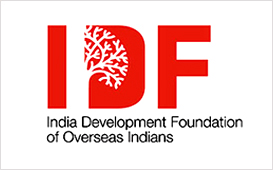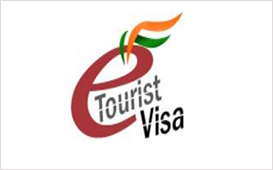Shyam Saran
Our globalised and inter-connected world today revolves around connectivity in the broadest sense of that term. It includes physical infrastructure in terms of roads, railroads , waterways and sea ports that enable the carriage of goods, services, peoples and ideas both within and across national borders. In our digital age, there are also virtual highways that enable the efficient movement of physical goods and services. They additionally serve as transmission channels for provision of services and the exchange of ideas which create value. But putting in place physical or digital infrastructure is not enough. We need accompanying software including policy, regulatory and procedural regimes to facilitate quick movement within the country as well as across national frontiers. Connectivity enables proximity and proximity is an asset which generates prosperity. Within national boundaries, connectivity is indispensable to the creation of a national market. Nations which are connected with each other in this larger sense are then able to participate in the regional and global value chains which are the hall-mark of modern global economy. If connectivity is missing or is inefficient, then the comparative advantage a country may have in producing certain goods and services would be reduced or even wiped out because of higher transaction costs.
There is no doubt that India has made significant progress in recent years in linking different parts of the vast country through a more extensive and efficient transport infrastructure. For example, total length of roads in the country increased from 4 lakh kilometres in 1951 to over 4.6 million kilometres in 2013. This is the second largest road network in the world. However the quality of the roads is extremely varied with national highways constituting less than one-third of the total. Furthermore, cargo traffic on the highways is held up at a number of octroi stations at inter-state crossing points. A cargo truck travelling from Mumbai to Kolkata has to negotiate 36 checkpoints along the route. In the U.S., there is only one barrier to cross in the journey from San Franscisco to New York. While rail freight in our country is subject to fewer interruptions and volume wise cheaper, the rail network has grown much less than road transport and feeder services have not kept pace. The proposed high speed freight corridor which will run across the country from Mumbai to Delhi and then east to Kolkata is likely to bring about a major and significant improvement in rail transportation within the country. Water borne transportation has fallen into disuse in our country though it is being revived. There is a World Bank assisted project to establish modern river transport in the Brahmaputra basin which would also reconnect Bangladesh and India.
In this context one should note the communication revolution which the mobile telephone has brought about in India. There are now over 900 million mobile subscribers in the country and this number continues to grow each year . They also constitute a platform for connectivity, creating new markets, connecting producers to consumers more efficiently and enabling vast amounts of data to flow seamlessly across communities. This can and is having a multiplier effect on economic activity through the closer proximity it creates.
Moving on to our sub-continental neighbourhood, it remains true that our countries are even less connected with each other today than in 1947. Several major transport arteries, including rail, road and water transport, were all interrupted after the partition of India in 1947. Even though some cross-border transport linkages are being re-established with both Bangladesh and Pakistan, they are not generating the benefits they should because of cumbersome customs, immigration and security procedures at border crossing points. Cargo movement is also held up due to lack of accompanying banking, testing and inspection facilities. These issues are now being addressed through an ambitious Indian plan to set up a network of Integrated Checkpoints (ICP) on borders with neighbouring countries. These ICPs which are being set up by the newly constituted Land Port Authority of India (LPAI), will incorporate, at one location, immigration, customs, security,warehousing, phyto-sanitary testing facilities as also banking and exchange facilities. There would be adequate parking, boarding and lodging and health facilities for the welfare of traders, truckers and other categories of travellers. One such ICP has already been set up at Attari on the India-Pakistan border. Several others are in various stages of implementation on India’s borders with Nepal, Bhutan, Bangladesh and Myanmar. The ICP at the Tamu-Moreh border point on the India-Myanmar border is already under construction. The back-end linkages in terms of modern highways and, where necessary railway connections are also being put in place with these countries mainly through Indian funding. Of special note in this regard are the proposed Trilateral Highway connecting India, Myanmar and Thailand and the Kaladan Multi-Modal Transport project linking the Myanmar port of Sittwe with Mizoram in our North-East and with Kolkata across the Bay of Bengal. Several highways across the India-Nepal and India-Bhutan borders are being upgraded and new rail links are planned. These transport links will bring closer the vision of a South Asia where there is a free flow of goods, peoples and ideas transcending political boundaries.
Leaders of South Asia have declared the decade of 2010-2020 as the Decade of Connectivity in the region. That in itself is a major step forward because it represents a political consensus on the importance of connectivity for shared prosperity. Two landmark agreements have been negotiated and are ready for adoption. One is the Motor Vehicles agreement and the other is a Railways agreement. When implemented, these agreements will go a long way in enabling the smooth movement of goods and peoples across national boundaries.
India has also given priority to its connectivity with ASEAN countries. The India-Myanmar transport projects are important because Myanmar is India’s gateway to South-East Asia. ASEAN has its own connectivity plan and India is working to align its own transport infrastructure development plans with ASEAN. These include cross-border rail and road connectivity, maritime , air and digital connectivity. These must be accompanied by better logistics and efficient border clearances. Only then would it be possible for India to participate in the regional and global value chains which are already highly developed in ASEAN and Asia-Pacific in general.
Ultimately what is required is a mind-set change in India. We must start looking at national boundaries not as impenetrable walls behind which we must protect ourselves from hostile influences beyond, but rather as “connectors”, bringing India closer to its neighbours and through them, the region and world . Cross- border links then become transmission belts for the free flow of development impulses. Transport corridors thus become economic corridors. Through much of its history, India was a flourishing civilisation, leveraging its geographical location at the cross-roads of the ancient caravan routes connecting to Central Asia. Thanks to its peninsular character , lying astride the Indian Ocean, India was also at the centre of the monsoon-driven ocean routes both to the East and the West. India flourished because it was a connected nation. India’s future lies in learning the lessons from its own cosmopolitan past.























